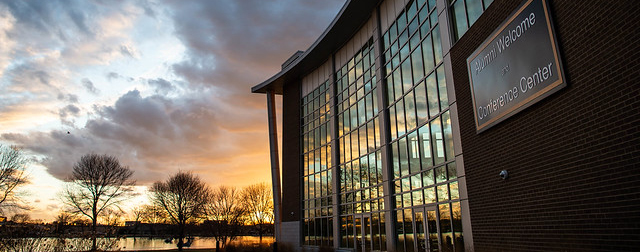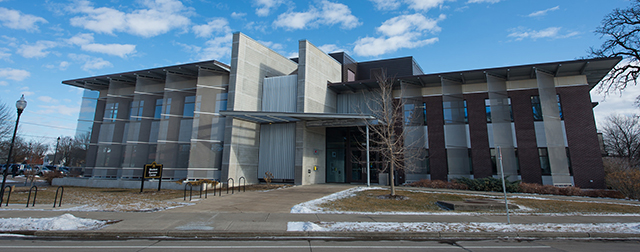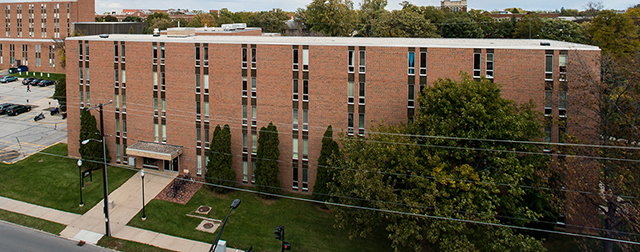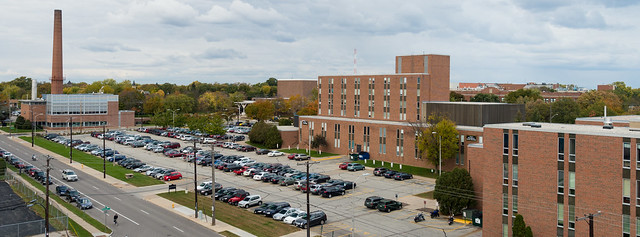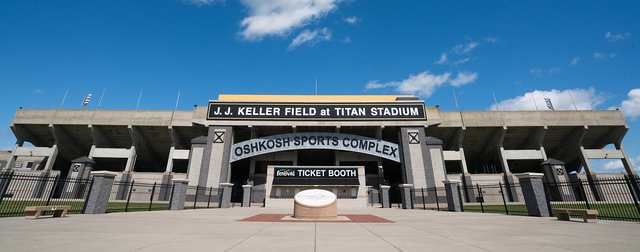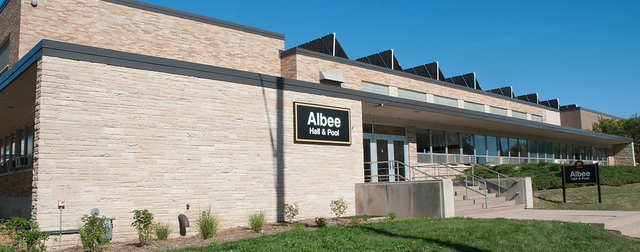Green Buildings
Buildings and the activities that take place in them greatly impact the environment and people. Green buildings reduce the university’s ecological footprint including energy consumption and pollution. At UW Oshkosh we are committed to green buildings. We aspire to a minimum of LEED Gold certification when possible.
LEED Certified Buildings
Horizon Village Residence Hall (LEED Gold)
Heating and Cooling
- Includes a hybrid geothermal/conventional heating and cooling system
- 56 geothermal wells are placed underground for heating water for the building
- Heat recovery system is used to retrieve excess heat from the Residence Life data center
- Individual temperature control gauges in each room
Green Roof
- Slows down and reduces the volume of runoff
- Filters water for better water quality
- Adds insulation in the winter and provides natural cooling through evaporative cooling in the summer
- Bioswales around the building help contain and filter water and slow down runoff
Other Features
- Outdoor patio and indoor fireplace are made of limestone from the previous hall, reducing material waste and consumption
- Electrical energy consumption was reduced by 80,000 KWH from 2013 to 2014
- Bike garage gives the opportunity to students to bring their bikes to campus
Sage Hall (LEED Gold)
Saves an estimated 40% in energy costs compared to standard construction
10% from on-site renewable sources
30% saved through natural lighting including low-tech light shelves that reflect light to provide softer light and automatic blinds that regulate the intensity of light
Solar Panels
- 188 non-tracking (fix-mounted) photovoltaic cell panels on the roof and 3 pole-mounted tracking systems rated at a total of 47.1 kW (enough electricity to meet the needs of 3-4 houses)
- 60 rooftop solar thermal panels produce up to 3 million BTUs/day providing 70% of the hot water needs of the building and providing radiant floor heating
- Reduces the need for forced air, thereby making the lecture rooms quieter
Green Roof
- 5,203 sq. ft. and can hold 6,192 gallons of water
- Reduces the volume and speed of runoff and filters the rainwater
- Provide some insulation in winter and evaporative cooling in summer
Bioswales
- Grounds engineered to retain storm water in bioswales
- Reduce the volume and speed of the runoff, and to improve water quality (materials tend to be tolerant of a range of conditions consist of plants native to Wisconsin)
Other Features
- Interior surfaces (e.g., paints, adhesives, furniture) are low in volatile organic compounds (VOCs)
- Sage Hall should last twice as long as conventional buildings
Culver Family Welcome Center (LEED Gold)
Grounds Features
No irrigation system was used for plantings and lawns
Native plantings used in landscaping
Biofiltration basins are part of the site plan for stormwater treatment
On-site bicycle racks for staff and visitors
Priority parking for (10) fuel efficient / low emissions vehicles
Building Features
- All exterior and interior stone is Pewter Lannon stone and native to Wisconsin
- The grand stair was manufactured in Tomahawk, Wisconsin
- Brick is manufactured within 500 mile radius of the building
- Cellular beams were used to clear span the banquet room, to allow for mechanical, electrical, telecom, plumbing, and fire protection mains to be run within the structure, which reduces the overall building height and envelope materials
- Entire membrane roof is white EPDM, energy star compliant, and offers high reflectance to promote a cooler roof
- Daylight sensors for lighting efficiency utilized in perimeter offices and meeting rooms
- Building footprint was reduced by incorporating a mechanical mezzanine vs. adding footprint and reducing the open landscape
- Interior surface finishes (paints, sealants, and adhesives) are all low VOC
- Machine room-less elevators were selected to help keep the building footprint down
- Floor gratings and drains are installed at the main public and service entrances to reduce the introduction of dirt and other pollutants into the building
- Low-flow plumbing fixtures used in the kitchen and all restrooms
- Kitchen hood features variable flow controls to optimize exhaust rates for the meals being cooked
Student Success Center (LEED Silver)
Taylor Residence Hall (LEED-inspired)
Student Recreation and Wellness Center
(built to LEED Silver standards)
- Uses locally-sourced building materials and recyclable items during construction
- Uses a lighting system that senses ambient light and adjusts the lighting inside accordingly
- Oriented to the north and south to increase energy efficiency
- Pole-mounted photovoltaic tracker system rated at 2.88 kW.
- A heat recovery wheel captures energy from air that is exhausted from locker rooms, toilet rooms, showers, and janitor closets.
- Large windows to capture the use of natural light
Buildings with Other Green Features
Blackhawk Commons
- Primary buffet dining location for students
- Trayless dining: reduced overconsumption by students which led to a 17% reduction in food waste
- Approaching 100% organic waste diversion to the biodigester on campus (BD1)
- Trash compactor at the facility reduces the frequency of waste pick up
- Water is heated with 24 rooftop solar thermal panels, producing an estimated 1,878 therms
- Reduced energy consumption by 20% through new appliances, lighting retrofits, and sustainable waste diversion
- Utilizes one of the most energy and water efficient dish machines on the market
Heating Plant
- Uses methane, low-sulfur coal, and pelletized paper for fuel; may use diesel during emergencies
- 16-panel solar thermal system on top of the building pre-heats water before being sent to the boiler
- In-building bag-house removes particulates associated with coal burning process
- In 2005 mechanical technicians lowered and calibrated thermostats campus-wide which corrected operational problems that were creating wasteful use of energy on campus
- By 2019, fossil fuel CO2 emissions from the campus heating plant should be down by 30%
Titan Stadium
Sustainability Institute for Regional Transformations
UW Oshkosh
800 Algoma Blvd.
Oshkosh, WI 54901




